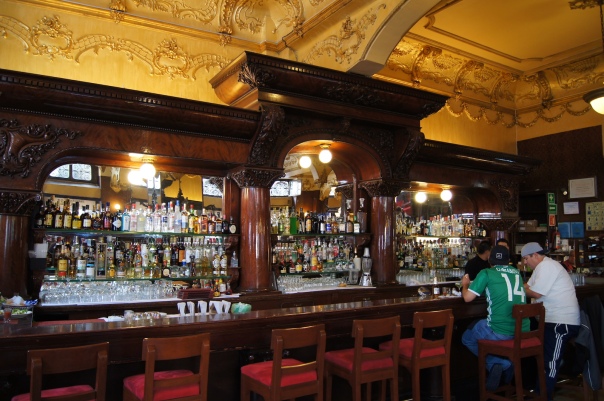Budget, Backpackers, Surfers, Beach Lovers, Naturalist, Hippie, Sun and Sand worshipers, Off the Beaten Path Paradise! Everyone is welcome at Zipolite!
Translate
A little about Playa Zipolite, The Beach of the Dead . . .
Playa Zipolite, Oaxaca, Southern Mexico, on the Pacific Ocean. A little bit about my favorite little get-away on this small world of ours.Zipolite, a sweaty 30-minute walk west from Puerto Angel, brings you to Playa Zipolite and another world. The feeling here is 1970's - Led Zep, Marley, and scruffy gringos.A long, long time ago, Zipolite beach was usually visited by the Zapotecans...who made it a magical place. They came to visit Zipolite to meditate, or just to rest.Recently, this beach has begun to receive day-trippers from Puerto Angel and Puerto Escondido, giving it a more TOURISTY feel than before.Most people come here for the novelty of the nude beach, yoga, turtles, seafood, surf, meditation, vegetarians, discos, party, to get burnt by the sun, or to see how long they can stretch their skinny budget.I post WWW Oaxaca, Mexico, Zipolite and areas nearby information. Also general budget, backpacker, surfer, off the beaten path, Mexico and beyond, information.REMEMBER: Everyone is welcome at Zipolite.ivan
Zipolite Blog Links
- Playa Zipolite
- Zipolite Entertainment, Party, Sports, Dance, Clubs, Music - - - Zipolite Entretenimiento, Fiesta, Deportes, Baile, Discotecas, Música
- Zipolite Food, Drink, Sunrise, Sunset - - - Zipolite Comida, Bebida, Amanecer, Atardecer
- Zipolite Nudist - - - Zipolite Nudista
- Zipolite ... Rentals, Camping, Hammocks, Apartments, House - - - Zipolite ... Alquileres, Camping, Hamacas, Apartamentos, Casa
- Zipolite Tours - - - Tours en Zipolite
- Zipolite Transportation and Rentals, Taxis, Bike, Moped, ATV - - - Zipolite Transporte y Renta, Taxis, Bicicleta, Ciclomotor, Cuatrimotos,
- Zipolite Yoga, Relax, Meditation, Temazcal - - - Zipolite Yoga, Relax, Meditación, Temazcal
- Budget Backpackers Off The Beaten Path - - - Mochileros económicos fuera del camino trillado
- Just For Fun ... by iVAn - - - Solo por diversión... de iVAn
- Near Zipolite - - - Cerca de Zipolite
- Travel Mexico - - - Viajes México
- ALL Playa Zipolite Blogspot Dot Com - - - TODO Playa Zipolite Blogspot Dot Com
Tuesday, June 11, 2019
moluzko Instarix.net Están listes para el #aguachile de #moluZko #conz en #zipolite ? 25.04.2019 - 1 mont ago. Están listes para el #aguachile de #moluZko #conz en ...
| moluzko
Están listes para el #aguachile de #moluZko #conz en #zipolite ? 25.04.2019 - 1 mont ago. Están listes para el #aguachile de #moluZko #conz en ...
|
預訂Playa Zipolite cabana en alto Agoda Playa Zipolite cabana en alto位於聖佩德羅波丘特拉,是旅客住宿的熱門之選。 從這裏出發,你可以盡情享受這座活力城市帶給你的驚喜。 住宿佔盡地利, ...
| 預訂Playa Zipolite cabana en alto
Playa Zipolite cabana en alto位於聖佩德羅波丘特拉,是旅客住宿的熱門之選。 從這裏出發,你可以盡情享受這座活力城市帶給你的驚喜。 住宿佔盡地利, ...
|
▶ 2019 NEW Just Gags For Laughs | Franks Funny June BEST
▶ 2019 NEW Just Gags For Laughs | Franks Funny June BEST
The Mark of the Michelada: All about Beer in Mexico MAY 31
https://nohaybronca.wordpress.com/2019/05/31/the-mark-of-the-michelada-all-about-beer-in-mexico/
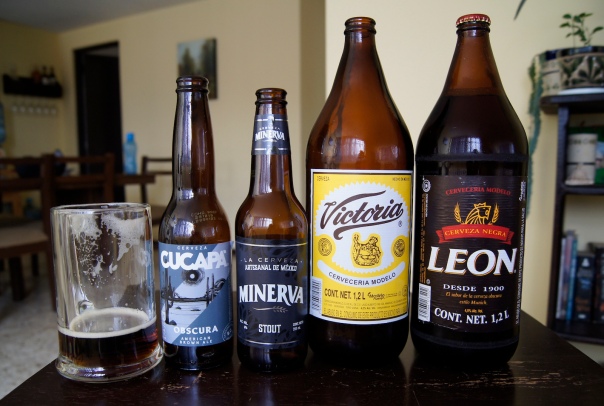
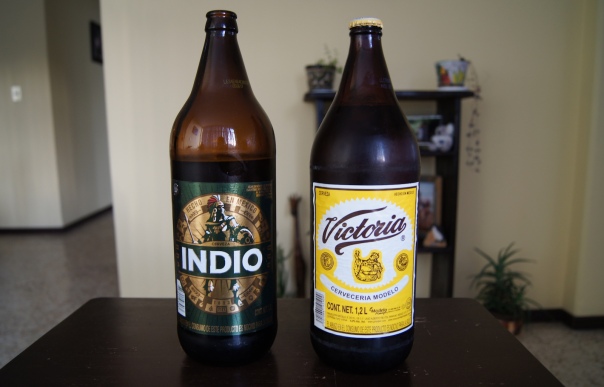
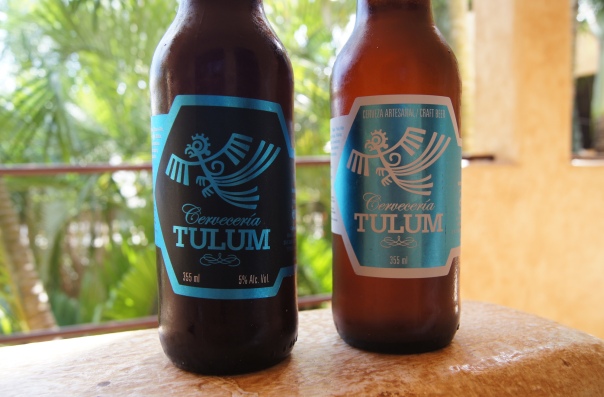
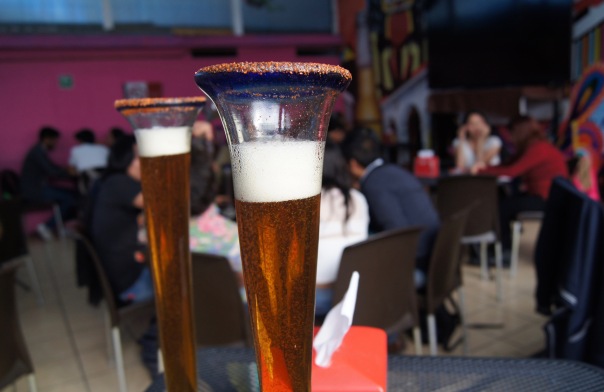
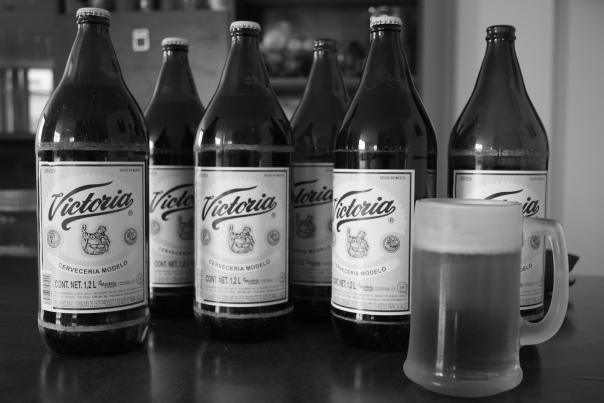
The Mark of the Michelada: All about Beer in Mexico
Posted by Ted Campbell
Mexican domestic beer, microbrews, and beer-drinking customs

Beer lovers, Mexico’s got you covered. There’s a lot of variety and quality in popular domestic brands, which are inexpensive and available everywhere. The average convenience store has at least six options, ranging from smooth pilsners to amber-colored ales. Factory beer stores called depositos offer even lower prices. You can find a reasonable number of imports, and there’s even a growing microbrew scene—some not so good, most overpriced, but at least the options are there.
There’s a long history of beer brewing in Mexico, beginning with the Spanish in colonial times and later greatly improved by several waves of German immigrants to Mexico in the late 19th and early 20th centuries. Cuauhtemoc-Moctezuma, one of Mexico’s two major beer conglomerates, was cofounded by German immigrants, and Mexico’s many dark beers from both companies are largely based on German recipes.
Germans didn’t only bring better brewing techniques, but also music. Polka directly influenced popular Mexican styles like banda, which features large horn sections, tuba for bass, and bouncy 3/4 rhythms. And what goes better with banda than a cold beer or ten?
Before beer, the alcoholic drink of choice in Mexico was pulque, made from the fermented nectar in the heart of the large maguey plant, similar to how tequila is made from the blue agave. Unlike tequila or other local spirits like mezcal, pulque has roughly the same alcohol content as beer. White, milky pulque has a slightly pungent or sour yet somehow refreshing taste, unless it’s curado—brewed with an additional natural flavor, such as strawberries or pine nuts.
Pulque was the victim of a smear campaign by beer companies in the early 20th century that portrayed it as a drink for low-class people with bad taste, giving it a negative stereotype that persists today, despite a slow-growing hipster renaissance. Pulque is still widely believed to be brewed with cow manure, which isn’t true, at least according to all the pulqueleros (pulque brewers and sellers) I’ve bought from and drunk with.
What is true is that pulque can’t be bottled; seal it, and it will eventually explode, due to pressure from ongoing fermentation. The best place to try pulque is at a pulquería or pulqueta(a cantina serving pulque—check Garibaldi Plaza in Mexico City, where all the mariachis are) or in a small town’s outdoor Sunday market, where you’ll see people, mostly men, gathered around a big plastic jug drinking pulque from earthenware mugs.
But enough about polka and pulque—on to beer.
Domestic beer in Mexico
Domestic beers are so well-established that you don’t see too many imports. The most common ones are probably Heineken, Stella Artois, and the occasional Budweiser. And recently, Michelob, which is strangely being marketed as an upmarket beer. You’ll find that imports are more expensive than the typically better Mexican equivalent, especially in cantinas and restaurants.
Domestic beer in Mexico is divided into two broad categories—clara and oscura, which mean light and dark. Claras are lagers or pilsners, like Budweiser or Heineken. Oscuras are usually ales, sometimes bocks, although the recipe and brewing method usually isn’t specified, other than simply being “dark.”
Mexico has two major beer companies, which like Miller and Anheuser-Busch in the U.S. have slowly acquired most other independent breweries. Both companies have their light and dark brews, with good ones on both sides.
Grupo Modelo is best known for Corona, and also produces Victoria, Modelo, Negra Modelo, Pacifico, Montejo, Leon, and Barrilito. This is Mexico’s top brewery, which has been owned by Anheuser-Busch since 2013.
The other company is Cuauhtemoc-Moctezuma, owned by Heineken and named after two important Aztec leaders during the Spanish conquest. History has been kinder to the former than the latter. While there are statues of Cuauhtemoc throughout Mexico, and countless neighborhoods and children named after him, Moctezuma is regarded as more of a failure, a weakling who was manipulated and outmaneuvered by Hernan Cortes. Despite this, his image is featured on the label of one of Cuauhtemoc-Moctezuma Brewery’s most important beers, Indio, which means “Indian.” Their other brands include Sol, Tecate, Dos Equis, Bohemia, Superior, Noche Buena, and Carta Blanca.
These domestic beers are available all over Mexico, with some more popular in certain regions, such as Tecate in the north or Superior in the south.
A note: I prefer dark beer, especially porters and stouts. I also love a good pale ale; IPAs, not so much, and weiss beers don’t do much for me. Light beer like Miller High Life or Corona are fine, but taste quite similar to me, especially when you squeeze a lime into them, as Mexicans are prone to do.
So, instead of saying which are “best,” I’ll just describe them and tell you what I like.
Oscura: dark beer
As mentioned, dark beers in Mexico fall under the general category of oscura. They are mostly ales. Dark dark beers like porters and stouts aren’t common in Mexico, and would be probably classified as “negro”—black.
My two favorite domestic beers in Mexico are both oscuras and are both made by Grupo Modelo: Victoria and Negra Modelo. Victoria is a lighter amber color, while Negra Modelo is truly dark, though not technically a stout or porter. Both go down smooth without heavy flavors or aftertastes.
Both are widely available in stores and restaurants, although Victoria, like Corona, is perhaps slightly more common. Victoria also comes in more convenient containers, like the most affordable tallboys and caguamas (40-oz size returnable bottles. More on beer packaging below).
If Victoria wasn’t flavorful enough for you—if you want something with more caramel, chocolate, or general density—then try Leon, which I personally place in third after Victoria and Negra Modelo.
Two more major-label brands with even more flavor are Bohemia Oscura and the seasonal Noche Buena, which is only available in the months surrounding Christmas. (Noche Buena, literally “Good Night,” is Christmas Eve, and also the Poinsettia, the red and green Christmas plant, which is indigenous to Mexico and on the label.) Both are a little too chocolatey for my taste—I can drink one or two and that’s it. But there’re worth a try—some people love them, especially Noche Buena.
Or, go right to the microbrews described below, but they’ll cost you.
The most common alternative to Victoria, produced by the competing company, is Indio, which is usually the same price and available at the same places as Victoria. Also like Victoria, it’s common in tallboys and caguamas.
Indio is fine, and it has a strong presence at rock concerts and soccer games, meaning that sometimes you’ll have no choice if you want an oscura. Try it, and if you do so right after a Victoria, you might agree with me that Victoria is just a little bit better.

Clara: light beer
Literally “clear,” claras include the beers that made Mexico famous—Dos Equis, Sol, and especially Corona. The brilliant marketing campaign for Corona showing the two transparent, sweating bottles with limes in their necks, sitting on a table on the beach before a calm ocean and bright blue sky, did wonders for this otherwise unremarkable beer.
Sure, it tastes fine, especially on that warm day as you sit in the shade of a seafood restaurant on the beach with your toes in the sand. But really, squeeze a lime into a Sol, Modelo, Pacifico, Tecate, or any other Mexican clara, and they all taste pretty much the same. Here’s a test—squeeze a lime into a Coors Light, and you’ll probably get the same effect.
Another note: In Mexico, they squeeze a slice of lime into beer, not lemon, and they never stick the whole thing in the bottle. More on that below.
As mentioned, I prefer dark beer, but I won’t turn down a light one on a hot day either. Of the many Mexican claras, without a lime squeezed in, probably Modelo and Pacifico are the best, Modelo if only because you can buy it in cans for really cheap in nearly every neighborhood store.
After Corona from Grupo Modelo, the other most popular clara in Mexico is Sol from Cuauhtemoc-Moctezuma. They’re both typically available in the same places as their dark counterparts Victoria and Indio. “Corona” means crown, by the way—look for the king’s cap on the label, and “Sol” means sun.
Dos Equis, popular outside of Mexico, means “two Xs”: XX, which you can see on the label. Dos Equis has a clara and an amber. The clara’s light but distinctive taste is enjoyed by many on both sides of the border. It’s not my favorite; I consider it the Mexican Heineken, to compare it with another popular beer that doesn’t do much for me.
Tecate Light is the Bud Light of Mexico, loved by cowboy-hat wearing, big truck driving characters. (And yes, there is a Corona Light, Tecate Light, etc.—why they make light beers lighter, and if there is actually any difference, I have no idea.) Regular Tecate is far better than Tecate Light, especially from a tallboy as you stroll the beaches and marinas of Cabo San Lucas.
Yet another note: Public drinking is officially illegal in Mexico, although it’s tolerated in many beach towns. Don’t try it in Mexico City, however.
Other common ones for a hot day are Montejo, Superior, and the supposedly premium Carta Blanca. You could also pick up a six-pack of Barrilito, which come in funny, short bottles.
Finally, the domestic light beer with the most flavor is Bohemia Weizen, the Bohemia with the blue label. It’s more expensive than everything else I’ve mentioned, but quite good—no need to squeeze a lime in.
Speaking of Bohemia, there’s also the strong Bohemia Obscura with the brown label, the average Bohemia Ambar, a redish pilsner, with the red label, and Bohemia Clasica, also a pilsner.
Try them all and tell me which ones you liked the best.
Microbrews
There are now hundreds of microbreweries in Mexico, with more appearing regularly. The best place to find a wide selection is a specialty beer store like The Beer Box, or any somewhat upscale restaurant. They’re usually called cerveza artesanal or cerveza de autor.
I’ve tried many, and they’re hit-or-miss. Sometimes they taste as good as any U.S. craft beer, especially the ones brewed in Baja California. Sometimes they taste like Corona with food coloring added. And sometimes—a real disappointment—something went wrong in the brewing process, and the bottle is far too pressurized. When you open it, beer foams out everywhere. So always have a large glass ready to pour it into.
One thing Mexican microbrews have in common is they’re uniformly expensive, especially when compared to the price of domestic mass-market beer. You can expect to pay between 60-160 pesos for one 12-oz bottle, about three to eight U.S. dollars, and more in restaurants.
When you go to Beer Box or a restaurant with a selection of craft beer, try a few different ones, ask for advice, or check their descriptions. Two I like (that I can remember) are Comma Beer and Red Pig. To that end, here’s some beer vocabulary in Spanish to help you choose your craft beer.
- pale: rubia
- red: roja
- lúpulos: hops
- cebada: barley
- trigo: wheat
I love a good craft beer, but in general, my conscience won’t allow me to spend 60 pesos on one 12-oz bottle of beer, no matter how good it may be, when I could get two 40-oz bottles of Victoria for the same price.
Similar to how there are two main producers of domestic beer, two craft beers have emerged as more affordable and more widely available than the rest, at least where I live: Minerva and Cucapa. At about 30 pesos per bottle (about 1.5 USD), they’re at least half the price of other craft beers, although still double the price of a domestic.
Minerva is far better than Cucapa, which can be downright nasty, and sometimes suffers from the overly-pressurized bottles mentioned above. Of all their varieties I’ve tried, their oscura—American Brown Ale—is the most acceptable.
Minerva, on the other hand, is great. I love their stout, and their pale ale is good too. They also have an IPA, a lager, and something called a “tropilager,”—a “tropical lager”—all of which I haven’t tried yet. Their stout is good enough for me, making it my regular microbrew indulgence.
Besides beer stores like the Beer Box, you can find Minerva, Cucapa, and other cheaper microbrews at big supermarkets like Chedraui or Wal-mart. (Yes, it’s a sad truth that in Mexico, Wal-Mart is one of the best places to buy imported beer, craft beers, wine, even bourbon—not to mention peanut butter, cheddar cheese, and Ben and Jerry’s Ice Cream.)
The other affordable craft beers I’ve tried have been nothing to get excited about. Two that you might find at a big supermarket are Day of the Dead or Calavera—fancy packaging, tempting descriptions, but mediocre beer, and the danger of overly-pressurized bottles. Tulum is another, which is available in convenience stores in the Mayan Riviera at a higher price than regular domestics, but cheaper than most other craft beers. I remember Tulum as being pretty good, although my perception was certainly skewed by beautiful sunny weather compounded by profound thirst.

Where to buy beer in Mexico
You can buy beer practically anywhere in Mexico—even on the side of the highway to take with you in the car. At concerts and soccer games, you don’t have to go looking for them—vendors regularly bring them right to you.
You can usually buy alcohol anytime you want, although in some parts of Mexico you can’t buy after midnight (or some late-night hour) or Sunday afternoon. Chain stores like the nationwide convenience store OXXO enforce this, locking their coolers, although many independent corner stores may not. Also, on election days and some Mexican holidays, the ley seca (the “dry law”) applies, meaning that sales of alcohol are prohibited, even in restaurants.
Tap beer is not so common, even at bars and cantinas—usually they just give you bottles. Be careful with tap beer too. Unless you are at a reputable place that regularly cleans out the tubes that go from the barrel to the tap, you can get a wicked hangover from drinking tap beer. This has something to do with all those nasty old particles clinging to the tubes.
To save money, or to buy in bulk, you have two better options than the average family-run corner store. You’ll see OXXOs everywhere, and they have average prices and a good selection. What you may not notice is that, depending on the specific store, you can get a discount on certain beers (usually tallboys, called latas altas) when you buy four or more. You can look for signs or displays, ask the clerk, or just buy four and see what happens to the price.
Even better discounts are available at depositos, which are factory stores, also known as expendios. There are two types, corresponding to each major beer brand. These are the best places to buy caguamas—the refillable 40-oz bottles that are not only the best value, but the most environmentally friendly.
Tip: With recycled bottles (you’ll know them by their beat-up conditions and leftover label glue on the glass), don’t drink straight from the bottle. Look under the rim and you’ll probably see some leftover gunk that wasn’t properly washed off. Pour the beer into a glass, or wipe the rim down with a napkin. This also goes for soda, which is why at restaurants your Coke will always come with a glass.
You pay a deposit on the caguamas, so save the receipt. You can find them at OXXOs and small corner stores too, but they are much cheaper at depositos. At the moment the promotion is two for 60 pesos—about three USD, bottle deposit not included. Think about it—that’s 80 ounces of beer for the price of one microbrew at a beer store, or one 12-oz Corona at a fancy restaurant.
But it used to be even better. When I first moved to Mexico in 2010, there was a promotion for Indio—bring in three bottle caps, and a caguama of Indio was 10 pesos. Ten pesos—at the time it was about 80 U.S. cents!
Right about then, I happened to make friends with the guy who parked and washed cars in one of the parking lots near my house. He drank caguamas of Indio all day, every day, throwing the bottle caps into a big pile in the corner. Not because of the promotion; he just liked Indio. When I asked him if I could take some caps, he said, take as many as you want! Scoop them up!
So for my first six months in Mexico, I drank 80-cent 40s of pretty good beer. I thought, I’ve come to the right place.
Drinking beer Mexican style
You’ll rarely see a Mexican drink a beer straight, without any enhancements. Often so much goes into it that it barely tastes like beer. Me, despite the occasional squeeze of lime into a light beer on a hot day, I prefer beer in its natural state. So, I recommend nothing described below, except maybe the shrimp michelada for novelty’s sake.
Just like there’s salt and pepper on every dinner table in the U.S., there’s salt and lime on every Mexican table. They go on everything—tacos, soups, and of course beer. Mexicans squeeze a lime into the beer—they never shove the whole lime down the neck—and then sprinkle some salt on top. And it’s always a lime, never lemon. In fact I’ve only seen lemons for sale in certain regions of Mexico, and they’re a little different from the lemons you may be imagining.
A note on confusing vocabulary—limes (green) are called limones, and lemons (yellow) are called limas.
You can even order it this way—escarchada, which means “frosted.” You’ll get a frozen mug with salt on the rim and lime juice at the bottom—sometimes two or three fingers of lime juice—along with the bottle of beer, for an extra cost of a few pesos.
There’s something else about that lime and salt—if you happen to get a skunked or flat beer, the lime kills the bad taste. Lime is more than delicious, but a great equalizing force.

Lime and salt is only the beginning. The really Mexican way to drink beer is in a michelada. I’m not sure of the origin of this word, but it is similar to chela, which is the Mexican slang word for beer.
A michelada is basically a Bloody Mary with beer substituting vodka: lime, salt, tomato juice, and maybe something extra like hot sauce or Worcestershire sauce, which is called salsa inglesa—English sauce. The top of the container—usually a liter-sized paper cup—will be coated in dried ketchup-like hot sauce and salt, looking vaguely like the pieces of broken glass sunken into the top of a concrete wall for security, seen on modest urban homes throughout Mexico.
You can even buy cans of pre-made micheladas, or with just the lime and salt already mixed in.
You can get some wild micheladas too, sometimes full of seafood like shrimp or oysters or slices of fruit and vegetables like mango or jicama. These aren’t bad, actually, but are more of a meal, or an experience, than a refreshment.
Another option is a cubana, which skips the tomato sauce and loads up with Worcestershire sauce until you can’t even taste the beer. Some places commit the further blasphemy of putting sugary fruit-flavored powder (mango, pineapple, etc.) in the beer or on the rim, presumably for the younger crowd.
Besides restaurants and town fairs, you can also find these for sale on the side of the road from convenience stores or little stands. You’ll know they serve micheladas when you see a bunch of caguama bottles lined up and big paper cups on a table in front of the store.
I don’t drink micheladas or these other concoctions, and I don’t know many foreigners who do, but actually they’re not as bad as they sound. Because of all these options, if you just want your beer and nothing else, order it sola—literally “alone.”
But try a michelada, if for nothing else than the experience. I had them fairly often when I first moved here, although now I can’t remember the last time I’ve had one. Probably at a crowded town festival with bouncy banda music playing.
You’ll know you’ve been drinking micheladas at one of these events, because the next day you’ll wake up to your shirt covered in little red horizontal lines from all the times someone bumped into your beer, and the rim of dried hot sauce and salt hit your chest. At your next Mexican party, look around for the mark of the michelada. If you see one, I hope you’ll remember this article and laugh.

Share this:
Subscribe to:
Posts (Atom)









